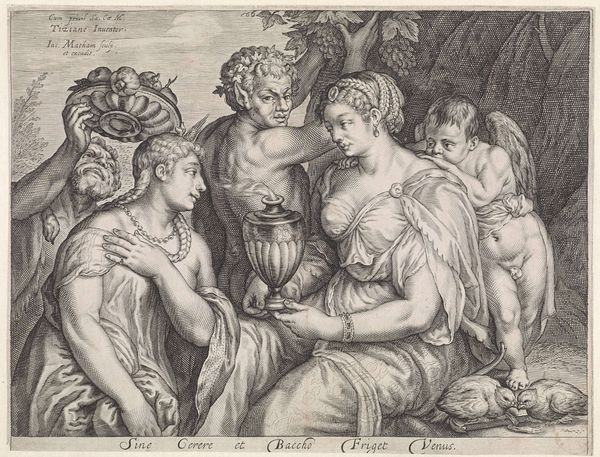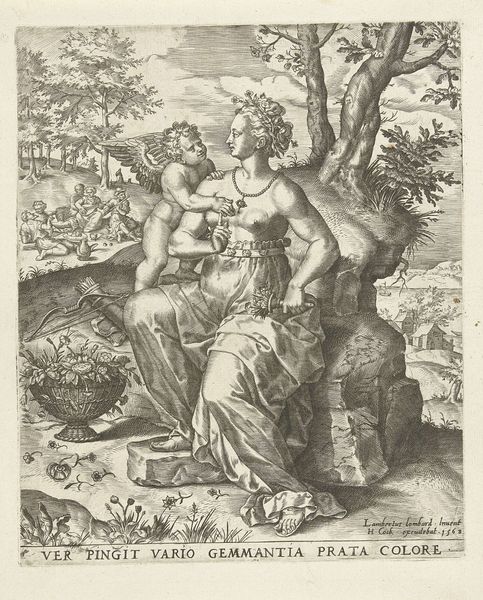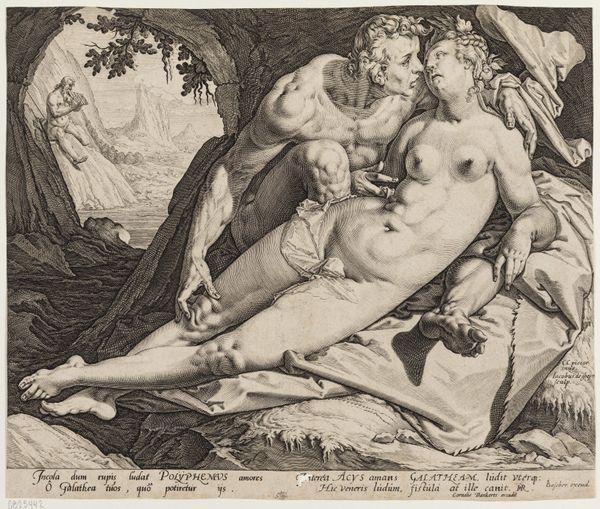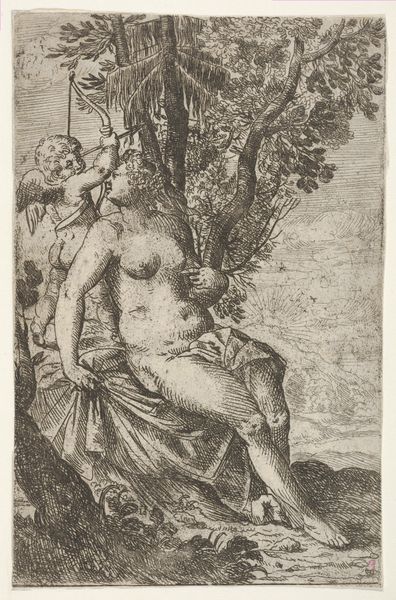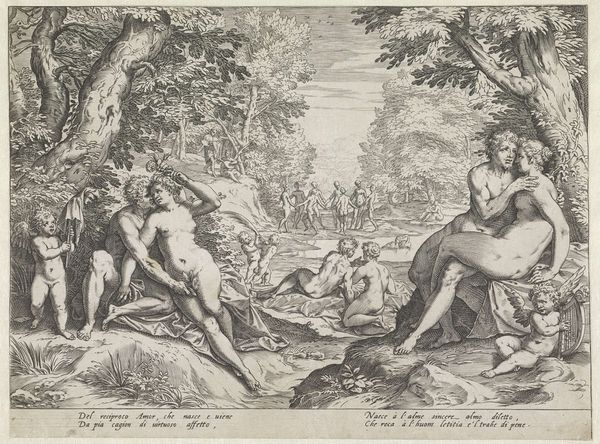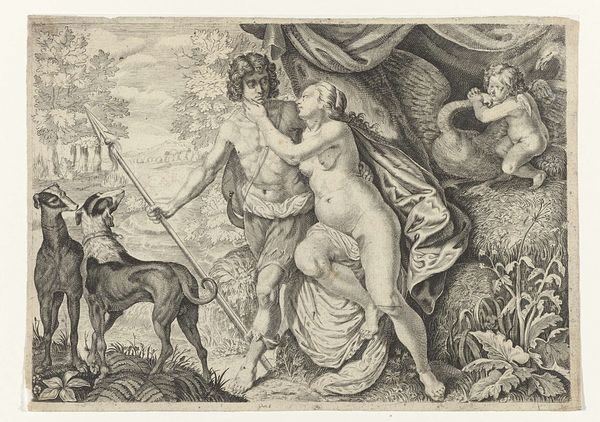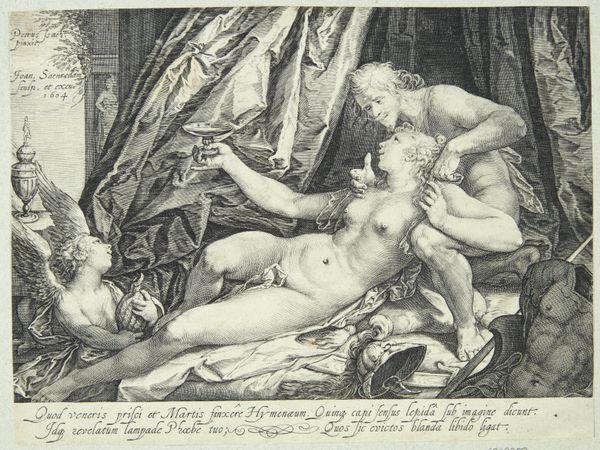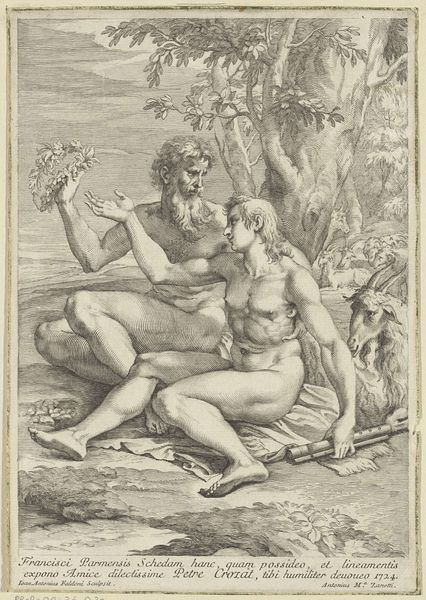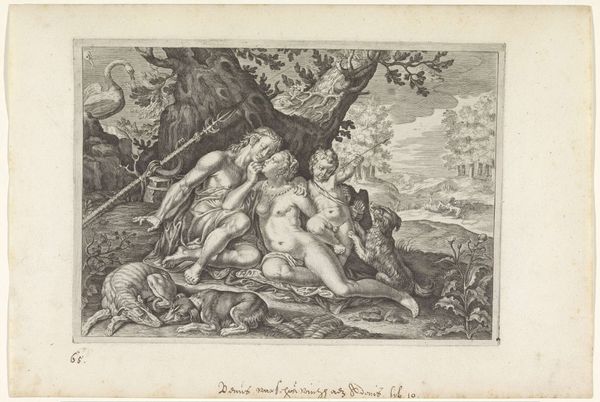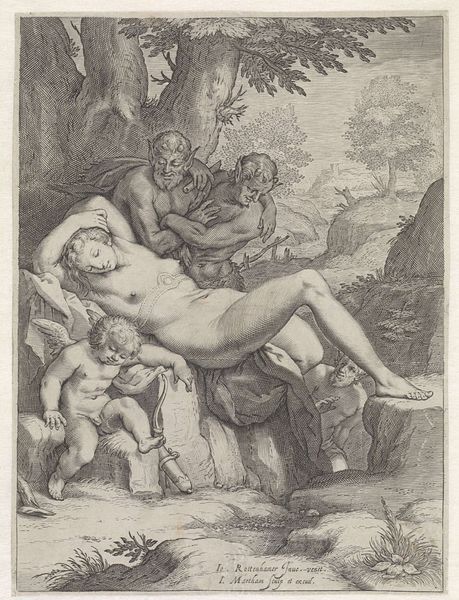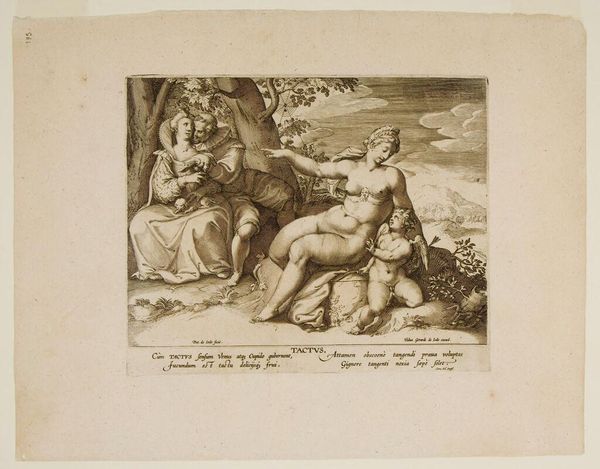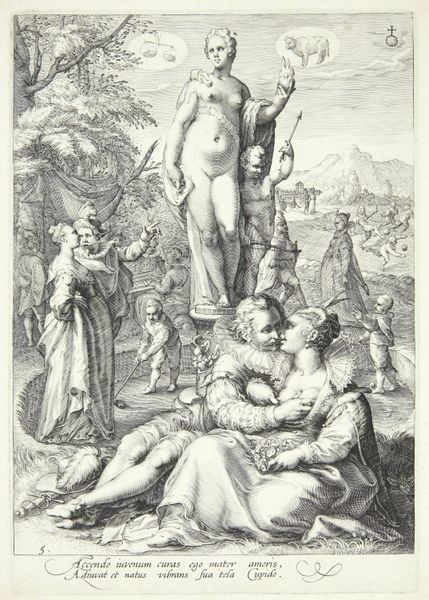
engraving
#
allegory
#
baroque
#
figuration
#
portrait drawing
#
history-painting
#
italian-renaissance
#
nude
#
engraving
Dimensions: height 188 mm, width 229 mm
Copyright: Rijks Museum: Open Domain
Pieter de Jode the First created this print, Tastzin, using the technique of engraving. Engraving is a printing process where the artist uses a tool called a burin to carve lines directly into a metal plate, usually copper. Ink is then applied to the plate and wiped off the surface, remaining only in the incised lines. The plate is pressed onto paper, transferring the ink and creating the print. The precision and detail achieved through engraving were highly valued in the 16th and 17th centuries. Look closely and you will notice the detailed lines and shading which give volume to the figures and textures to the landscape. The process demands careful planning and skillful execution, each line is a deliberate mark that contributes to the overall image. Engravings like this served not only as works of art, but also as a means of disseminating knowledge and imagery in a pre-photographic era. Appreciating the artistry of this print requires understanding the labor-intensive process behind it and its role in circulating ideas and aesthetics.
Comments
No comments
Be the first to comment and join the conversation on the ultimate creative platform.

